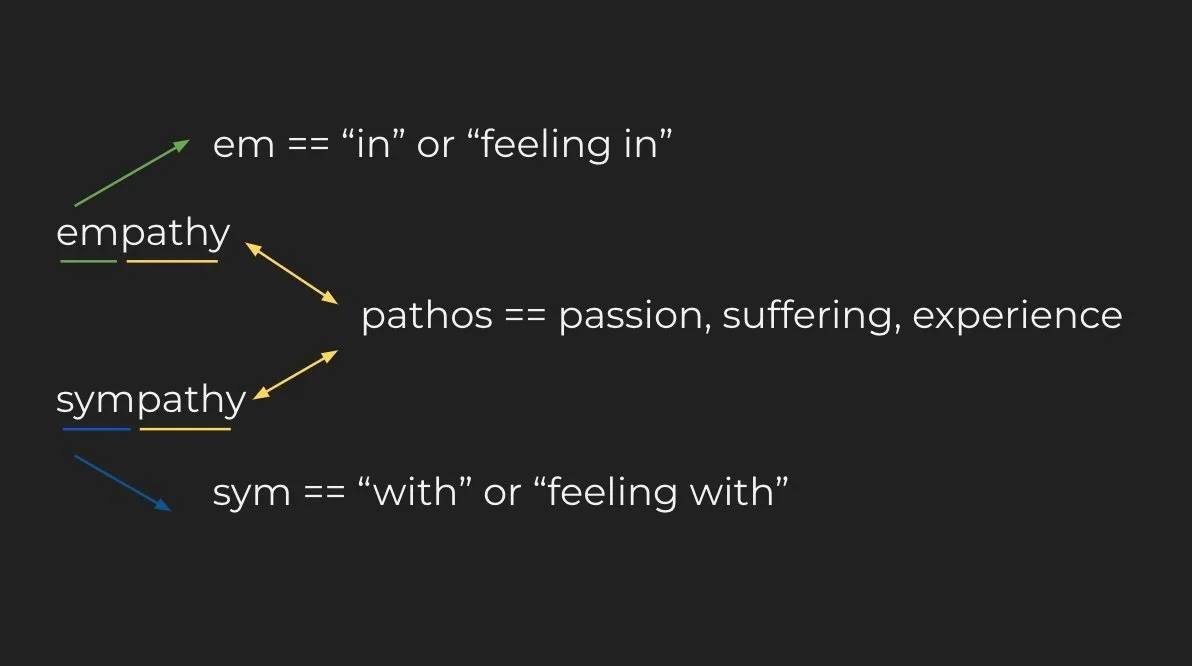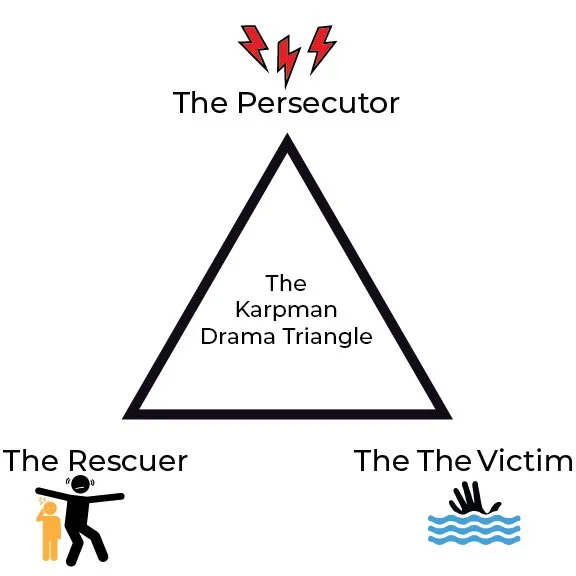Avoid the Drama. Practice Authentic Compassion
This week my UX course will start understanding the process of why we use empathy to drive the discovery phase within the UX process. When I first started delivering materials on user experience the research phase was daunting for me, considering I was coming from the position of an extensive graphic design / advertising background. Now I have a much better understanding and appreciation of the importance of this research and discovery phase that takes place even before creative ideas emerge.
What actually is empathy?
The answers are getting better and more accurate since I started asking this question in my class. Considering I’m dealing with second years, the nervous silence of first years have mostly disappeared. I’m starting to think that society as a whole is better understanding what the difference between sympathy and empathy really is. I use this handy chart to break it down.
The handy chart used to describe the difference between empathy and sympathy.
Empathy is listening without judgment. Empathy is knowing when not to give advice, or trying to “silver line” a person’s concerns or worries. Empathy is to put yourself into someone else’s position, and try to feel inside of what they are experiencing. To practice empathy is a life long journey, and everyone will get it wrong at one time or another.
Empathy takes time and effort, and sometimes, empathy means you aren’t in a space yourself to do anything more than listen. Which is ok.
Pity is emotional detachment, the acknowledgement of the issue: "poor you". Sympathy is caring about someone's suffering, but trying to minimise, make better, or silver-lining the problem away "At least your problem isn't....(something worse)". Empathy is when the listener feels another's suffering within themselves, and making an effort to place themselves within. Compassion is the motivation to change or relieve someone's suffering. A call to action.
Authenticity is vital, and difficult to achieve
Moving from empathy to compassion is what is considered the catalyst in user experience to drive engagement and positively impact the user. As user researchers, we can’t always easily place ourselves into the shoes of others without a considerable amount of effort or personal work. As much as we would like to open ourselves to other peoples lived experience, emotional effort, adjacency to, cultural understanding (or misunderstanding), or sheer effort might get in the way of allowing ourselves to fully place ourselves within this. If we are not practicing authentic compassion, and creating the barrier between empathy and action we can fall into unhealthy roles and habits.
The Karpman Drama Triangle
I was recently looking at the Karpman Drama Triangle and felt it spoke to what I was trying to explain. I am aware that this is not usually used in user experience, but i thought there were some interesting connections here. If you aren’t familiar with it, the Karpman Drama Triangle was proposed by psychiatrist Stpehen B. Karpman in 1968. It maps a kind of destructive interaction that can occur among people in unhealthy and manipulative situations (Lac, A. and Donaldson, C.D. 2020).
The Persecutor: Traditionally, the Persecutor can be characterised as aggressive and hypercritical, or places the blame on others for their problems and and issues. There is a strong entitlement belief with the Persecutor.
If you are a researcher entering into an area of investigation that could be considered a contributor to the participants challenges, or you are studying the system that is actively contributing to the challenges of the participant, you could be inadvertently be seen as someone in the persecutor role. In other words if you are researching something that is not a direct part of your lived experience, this might mean you will or could be associated with this role. Compassion and openness, humility, and creating a safe space — whatever that might look like — will help diffuse this perception and allow the participant feel more comfortable with sharing.
The Victim: victims communicate that the negative things that happen, happen to them and they are powerless to overcome them. They may or may not actually be victims, but perceive that they are powerless to make changes within the system described.
Sometimes the topics we are researching can be tough for those who are experiencing them. Disempowerment, exclusion, or even frustration with the inablilty to understand or use something can be common. It is important that we as researchers do not frame the participants exclusively as victims, with thereby reinforcing that narrative. Another possibility is becoming overly empathetic with their situation that we ourselves become emotionally strained or burnt out. Compassion allows empathy wit boundaries, allowing us to validate these feelings, while emphasizing their own agency and resilience.
The Rescuer: A rescuer may feel an elevated need or desire to help others. However fit a classic enabler profile instead. They want to go out of their way to help people they perceive to be too weak: psychologically, mentally, emotionally or physically. They expend a large effort to improve, change, or control behaviours of others. (Lac, A. and Donaldson, C.D. 2020).
Often times we feel passion or compelled by what we are researching. Our desire to help enact change is real, and that is not only great, but why we are drawn to this kind of work. It is our job to focus on understanding and documenting experiences. Compassion allows the call to action, without entangling ourselves in a way that could be inappropriate (like taking immediate action, or assisting in a way that violates GDPR).
Authenticy allows us compassion. Compassion allows us to avoid the Drama Triangle.
Making the switch from empathy to compassion allows us to set up boundaries between internalising the conflict and allowing a call to action. Compassion “requires us to be open to taking on the emotions, thoughts, and experience of someone else, with the intent of improving that person's experience. It's a key difference: without the intent there, it's easy to brush aside the experiences”describes Auldyn Matthews. Compassion allows engagement and goals to end the suffering. Being your authentic self, be it with boundaries, holding space, or validating someone’s feelings without harming ourselves, or becoming fatigued and therefore removed from their discomfort.
Lac, A. and Donaldson, C.D. (2020). Development and Validation of the Drama Triangle Scale: Are You a Victim, Rescuer, or Persecutor? Journal of Interpersonal Violence, 37(7-8), p.088626052095769. doi:https://doi.org/10.1177/0886260520957696.


